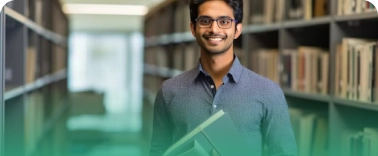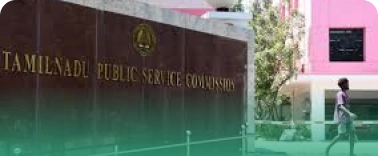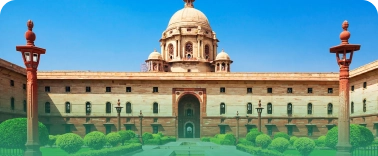
Classical Languages of India: Explainer
Classical Languages of India: Explainer
India's linguistic diversity is one of its most treasured cultural assets, with several languages originating from India carrying thousands of years of heritage and knowledge. The recent recognition of additional classical languages by the Union Cabinet under the leadership of the Prime Minister of India marks a significant milestone in preserving India's rich linguistic legacy. This comprehensive explainer by Veranda RACE explores everything you need to know about the classical languages of India, their criteria for recognition and their importance in our cultural fabric.
What Makes a Language Classical in India?
The concept of classical language designation in India is relatively recent in formal terms but acknowledges millennia of linguistic heritage. In 2004, the Government of India first established a new category of languages known as Classical Languages. This category set specific criteria to identify languages as a classical language that have played a pivotal role in preserving the India’s intellectual and cultural traditions.
A classical language in India isn't merely an old language — it's a custodian of knowledge, literature and cultural expressions that have withstood the test of time. They are considered as the custodians of India’s ancient and profound cultural legacy. These classical languages serve as bridges to our ancient past, preserving philosophical thoughts and cultural traditions that continue to influence modern Indian society.
Classical Language of India: Criteria
The criteria for recognising or declaring a language as classical language of India have evolved over time. Understanding these criteria for declaring a language as a classical language of India is essential for government competitive examaspirants particularly Bank, Insurance, SSC, TNPSC and UPSC exam aspirants.
Initial Criteria for Classical Languages in 2004
The Indian Government created a new category of languages known as the Classical Languages in 2004. When the classification for a new category of languages was first introduced in 2004, the Indian Government set the following criteria for the status of Classical Language:
- High antiquity of early texts/ recorded history of the language spanning over a thousand years
- A substantial body of ancient literature or texts of the language considered valuable heritage by generation of speakers
- The literary tradition of the language must be original and not borrowed from another speech community
These initial criteria set by the Indian Government for the category of languages was revised in 2005 and further in 2024 based on the recommendations of the Linguistic Experts Committees (LEC) under the Sahitya Akademi.
Revised Criteria for Classical Languages in 2005
In 2005, the criteria for classical languages was revised by the Indian Government based on the recommendations of the Linguistic Experts Committee under the Sahitya Akademi. Sanskrit was recognised as a classical language by the Union Home Ministry in 2005 under these revised criteria.
Here are the detailed revised criteria made by the LEC under the Sahitya Akademi in November 2005:
- High antiquity of the early texts/recorded history of the language over a period of 1500 to 2000 years
- A body of ancient literature or texts of the language considered valuable heritage by generations of speakers
- Original literary tradition of the language distinct from other speech communities
- Possible discontinuity between the classical form and modern derivatives
Latest Criteria of Classical Languages in 2024
The criteria for the recognition of classical languages in India was further revised by the LEC under the Sahitya Akademi in 2024. Here is the most recent revision of the criteria for recognising a language as a Classical Language in India in 2024:
- High antiquity of early texts/recorded history of the language over 1500 to 2000 years
- A body of ancient literature or texts of the language considered heritage by generations of speakers
- Knowledge texts, including prose in addition to poetry and epigraphical as well as inscriptional evidence of the language
- Recognition that classical forms may be distinct from or discontinuous with current forms
NOTE:
Maharashtra Government has declared 3rd October as “Classical Marathi Day” and also October 3 to October 9 will be marked as “ Classical Marathi language Week” every year.
The Linguistic Expert Committee under the Sahitya Akademi also recommended the following languages to the Indian Government as fulfilling the revised criteria 0f 2024 to be consider as a classical languages for the following languages: Marathi, Pali, Prakrit, Assamese and Bengali.
List of Classical Languages in India
As of April 2025, India has recognised eleven languages as classical languages of India. Here is the complete list of classical languages in India recognised by the Indian Government along with the recent additions:
List of Classical Languages in India | ||
| Classical Language | Recognition Date | Notifying Ministry |
| Tamil | 12 October 2004 | Union Ministry of Home Affairs |
| Sanskrit | 25 November 2005 | Union Ministry of Home Affairs |
| Telugu | 31 October 2008 | Union Ministry of Culture |
| Kannada | 31 October 2008 | Union Ministry of Culture |
| Malayalam | 8 August 2013 | Union Ministry of Culture |
| Odia | 1 March 2014 | Union Ministry of Culture |
| Marathi | 3 October 2024 | Union Ministry of Culture |
| Pali | 3 October 2024 | Union Ministry of Culture |
| Prakrit | 3 October 2024 | Union Ministry of Culture |
| Assamese | 3 October 2024 | Union Ministry of Culture |
| Bengali | 3 October 2024 | Union Ministry of Culture |
The recent addition of five languages — Marathi, Pali, Prakrit, Assamese and Bengali — to the prestigious list of classical languages of India represents a significant recognition of their historical importance and literary contributions.
The Union Ministry of Home Affairs initially granted the status of classical language to Tamil and Sanskrit in 2004 and 2005 respectively.
Then, the Union Ministry of Culture under the Indian Government took over the responsibility for further implementations and future recognitions of classical languages of India. The Union Ministry of Culture has granted the status of classical language to Telugu, Kannada, Malayalam, Odia, Marathi, Pali, Prakrit, Assamese and Bengali.
The Union Ministry of Culture established the Linguistic Experts Committee (LEC) on 1 November 2004 to assess future proposals for the recognition of classical languages of India.
Classical Language Tamil: The First to Receive Recognition
Tamil language holds the distinction of being the first language to be designated as a Classical Language in India. Tamil language was accorded the status of Classical Language of India on 12 October 2004 by the Union Home Ministry under the Indian Government.
Tamil language possesses one of the most ancient literary traditions in the world, with works dating back over two millennia. Its literature encompasses various genres, from poetry to philosophical treatises, making it a treasure trove of ancient wisdom and cultural expressions.
The Central Institute of Classical Tamil was established to facilitate the translation of ancient Tamil texts, promote research in Tamil language and offer specialised courses for university students and language scholars. It is an autonomous institution functioning under the aegis of the Language Division of the Union Ministry of Education of the Indian Government for the development of the Tamil language.
Its mission is to exclusively concentrate on research works relating to the Classical phase of Tamil (from the early period to 600 AD), which addresses the vital issues of the antiquity and uniqueness of Tamil language.
Classical Language Marathi: Recent Recognition of Historical Importance
Marathi was declared as a Classical language of India by the Union Ministry of Culture in 2024. This acknowledges rich literary tradition of the Marathi language that spans centuries.
Marathi is an Indo-Aryan language widely spoken in the Indian state of Maharashtra and has a rich literary tradition that dates back over a thousand years. As a vital medium of cultural expression and communication, Marathi reflects its people's unique traditions and values through its diverse literary heritage, encompassing poetry, prose and folklore.
Modern Marathi evolved from ancient languages spoken in the region, starting with Maharastri Prakrta, a dialect of the Prakrit languages spoken during the Satavahana era (2nd century BCE to 2nd century CE). The Marathi language's first known inscription dates back to around 2200 years ago, found in the Naneghata inscription, where the term 'Maharathino' was used. This inscription, written in the Brahmi script, proves that the language must have existed at least a few centuries before.
The earliest known literary work in Marathi, Gathasaptasati, is approximately 2000 years old and showcases the superior quality of early Marathi poetry. Gathasaptasati is a collection of poetry attributed to the Satavahana King Hala, believed to have been compiled in the 1st century CE.
Following this, Lilacharitra and Jnanesvari emerged after Marathi reached a mature linguistic stage about eight centuries ago. These works suggest that Marathi had already developed into a rich and expressive language long before these texts were composed.
Classical Language Malayalam
Malayalam was recognised as a classical language of India in 2013 by the Union Ministry of Culture. It boasts a rich literary heritage that has preserved valuable knowledge systems of Kerala and southern India.
Malayalam is the official language of the state of Kerala and the Union Territory of Lakshadweep. Malayalam is known for its unique ‘Vattezhuthu’ script and rich literary tradition among the Dravidian languages. The earliest literary works in Malayalam date back to the ninth to eleventh centuries.
Classical Language Kannada
Kannada received recognition as a classical language of India in 2008, acknowledging its ancient origins and substantial literary corpus. It is a Dravidian language spoken in the South India, particularly in the state of Karnataka.
With inscriptions dating back to the early centuries CE and a continuous literary tradition, Kannada represents one of India's oldest living languages.
The Centre for Excellence for studies in Classical Kannada focuses on research, translation, and preservation of ancient Kannada texts. This institution plays a vital role in ensuring that Kannada's classical heritage remains accessible to future generations and continues to influence contemporary thought.
Classical Language Bengali
The recent inclusion of Bengali among the classical languages of India recognises its ancient origins and rich literary tradition. With its early texts meeting the stringent criteria of high antiquity and original literary contributions, Bengali has now been formally acknowledged for its historical importance in eastern India.
Genetically, Bengali is derived from Indo-Aryan languages, which belong to the Indic sub-branch of the Indo-Iranian branch of the Indo-European family. Bengali belongs to the New Indo-Aryan category, broadly derived from the Middle Indo-Aryan. Documents like the Donha of Tantric Buddhists, Nathists, Saivaties or Jainas mark the transitional shift from Middle Indo-Aryan to New Indo-Aryan, referred to as Avahattha or Proto New Indo-Aryan.
Bengal has a long-standing tradition of poets and authors who have significantly influenced the cultural and intellectual landscape of not only the state but also the country. The earliest Bengali literary works can be traced back to the 10th and 12th centuries AD. The 16th century marked a turning point with religious reforms led by Chaitanyaand and the sacred law fostered by Raghunath and Raghunandan. The subsequent centuries witnessed the rise of original compositions, with notable figures such as Mukunda Ram, often referred to as the 'Chaucer of Bengal', and later literary masters like Bharat Chandra and Ram Prasad.
The 19th century heralded a golden era for Bengali literature, with influential figures like Raja Ram Mohan Roy and Ishwar Chandra Vidyasagar making significant contributions. Newspapers like Samvad Kaumudi, Som Prakash, and Bande Mataram played pivotal roles during the freedom struggle, highlighting the power of the written word in mobilising the masses. Bankim Chandra Chatterjee pioneered Bengali fiction, while poets like Rabindranath Tagore, Michael Madhusudan Dutta, Sukanta Bhattacharya, and Kaji Nazrul Islam significantly contributed to the literary revolution that fuelled the fight for independence. Our Indian National Anthem 'Jana Gana Mana', composed by Rabindranath Tagore and our Indian National song 'Vande Mataram' by Bankim Chandra have both emerged out of Bengali poets.
Notably, Rabindranath Tagore won the Nobel Prize for Literature in 1913, showcasing Bengali literature on a global stage.
Government Initiatives to Promote Classical Languages
The Indian Government has implemented several measures to preserve and promote the Classical Languages of India by establishing educational institutions, offering financial support to safeguard the legacy and offering recognition and awards.
Educational Institutions
The Union Ministry of Education has undertaken various steps to advance Classical Languages of India. It has established three Central Universities through an Act of Parliament in 2020 to promote Sanskrit.
The Central Institute of Classical Tamil was established in 2008 to facilitate translating ancient Tamil texts, promoting research in Tamil language and offering specialised courses for university students and language scholars.
The Centres for Excellence for studies in Classical Kannada, Telugu, Malayalam and Odia was established under the Central Institute of Indian Languages in Mysuru to further enhance the study and preservation of Classical Languages of India.
Financial Support
The Indian Government provides substantial funding as financial support for the preservation and promotion of classical languages of India. The Budget allocation for various classical languages by the Indian Government over the past decade demonstrates this commitment.
In Tamil Nadu State Budget for 2025-26, the Government of Tamil Nadu announced plans to establish ‘Agaram - Museum of Languages’ at the Madurai World Tamil Sangam Campus in Tamil Nadu to educate the younger generation about the antiquity and continuity of Tamil, one of the world's oldest classical languages.
Recognition and Awards
The Union Ministry of Education has established various national and international awards to recognise and encourage achievements in the field of Classical Languages. Additionally, university chairs and specialised centers for various languages have been created to promote research and education in these classical languages of India.
Significance of Classical Language Status in India
The designation of a language as ‘Classical Language of India’ by the Indian Government carries substantial implications:
Cultural Pride and Identity
Recognition as a classical language of India instils a sense of pride among speakers and reinforces cultural identity. It acknowledges the language's role in shaping the India’s intellectual and cultural heritage.
Academic & Economic Opportunities
The preservation, documentation and digitisation of ancient texts of these classical languages create employment opportunities in academia, research, archiving, translation, publishing and digital media.
Global Recognition
Classical status for a language in India enhances the language's international profile, potentially increasing interest in its study and research worldwide. This global recognition contributes to cultural diplomacy and cross-cultural exchange.
Preservation of Ancient Knowledge
The designation of a language as a ‘Classical Language of India’ encourages the preservation and revitalisation of ancient texts and knowledge systems, ensuring their availability for future generations. This preservation effort of the texts and knowledge system of the classical languages helps maintain India's intellectual continuity with its past.
The recognition of eleven languages as classical languages of India represents the Indian Government’s commitment to preserving the India’s rich linguistic heritage. These classical languages of India serve as repositories of ancient wisdom, cultural expressions and intellectual traditions that continue to influence modern Indian society.
As India moves forward on its path of development, recognising and preserving these languages ensures that the wisdom of ancient India remains accessible to future generations. The recent addition of five more languages to this prestigious list of Classical languages reinforces the importance of linguistic diversity in India's cultural landscape and contributes to the broader vision of a culturally rooted and self-reliant nation.
FAQs
Veranda RACE’s SSC Triumphants
GST Inspector, CBIC
My father worked in a foreign country but COVID made us economically weak. Working multiple construction jobs, I prepared for SSC exams dreaming to be a Central Government officer. I'm happy that RACE made me the first Government Officer in my family.
Balaji
SSC CGL Exam 2023

SSC CGL Exam 2023
Joining Veranda RACE for SSC course changed my course of exam preparation. With friendly faculty and mentors, my focus and marks soared higher. Their Test Batch was a game changer making me realise the effect of my preparation. Thanks to my parents and faculty!
Bhuvaneswaran
Auditor (Defence Accounts)

SSC CGL Exam 2022
I always felt like studying in my home while I prepared in Veranda RACE. SSC Team was extremely helpful in solving all my doubts, provided Tier II coaching during the lockdown period and helped me crack the SSC CGL Exam within a span of 2 months of preparation.
Blessy Rachel
Preventive Officer, CBIC
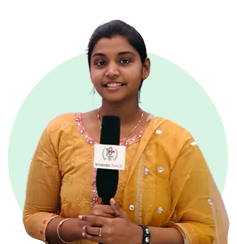
SSC CGL Exam 2023
I am the first central government officer in my family. I’d be forever indebted to my SSC faculty, teachers and mentors of Veranda RACE for their immense guidance during my SSC preparation. Thank You, Veranda RACE for helping me achieve my dream central government job!
Daniel Rosario
GST Inspector, CBIC
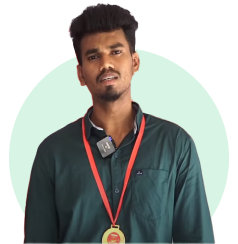
GST Inspector, CBIC
My father worked in a foreign country but COVID made us economically weak. Working multiple construction jobs, I prepared for SSC exams dreaming to be a Central Government officer. I'm happy that RACE made me the first Government Officer in my family.
Balaji
SSC CGL Exam 2023

SSC CGL Exam 2023
Joining Veranda RACE for SSC course changed my course of exam preparation. With friendly faculty and mentors, my focus and marks soared higher. Their Test Batch was a game changer making me realise the effect of my preparation. Thanks to my parents and faculty!
Bhuvaneswaran
Auditor (Defence Accounts)

SSC CGL Exam 2022
I always felt like studying in my home while I prepared in Veranda RACE. SSC Team was extremely helpful in solving all my doubts, provided Tier II coaching during the lockdown period and helped me crack the SSC CGL Exam within a span of 2 months of preparation.
Blessy Rachel
Preventive Officer, CBIC

SSC CGL Exam 2023
I am the first central government officer in my family. I’d be forever indebted to my SSC faculty, teachers and mentors of Veranda RACE for their immense guidance during my SSC preparation. Thank You, Veranda RACE for helping me achieve my dream central government job!
Daniel Rosario
GST Inspector, CBIC





